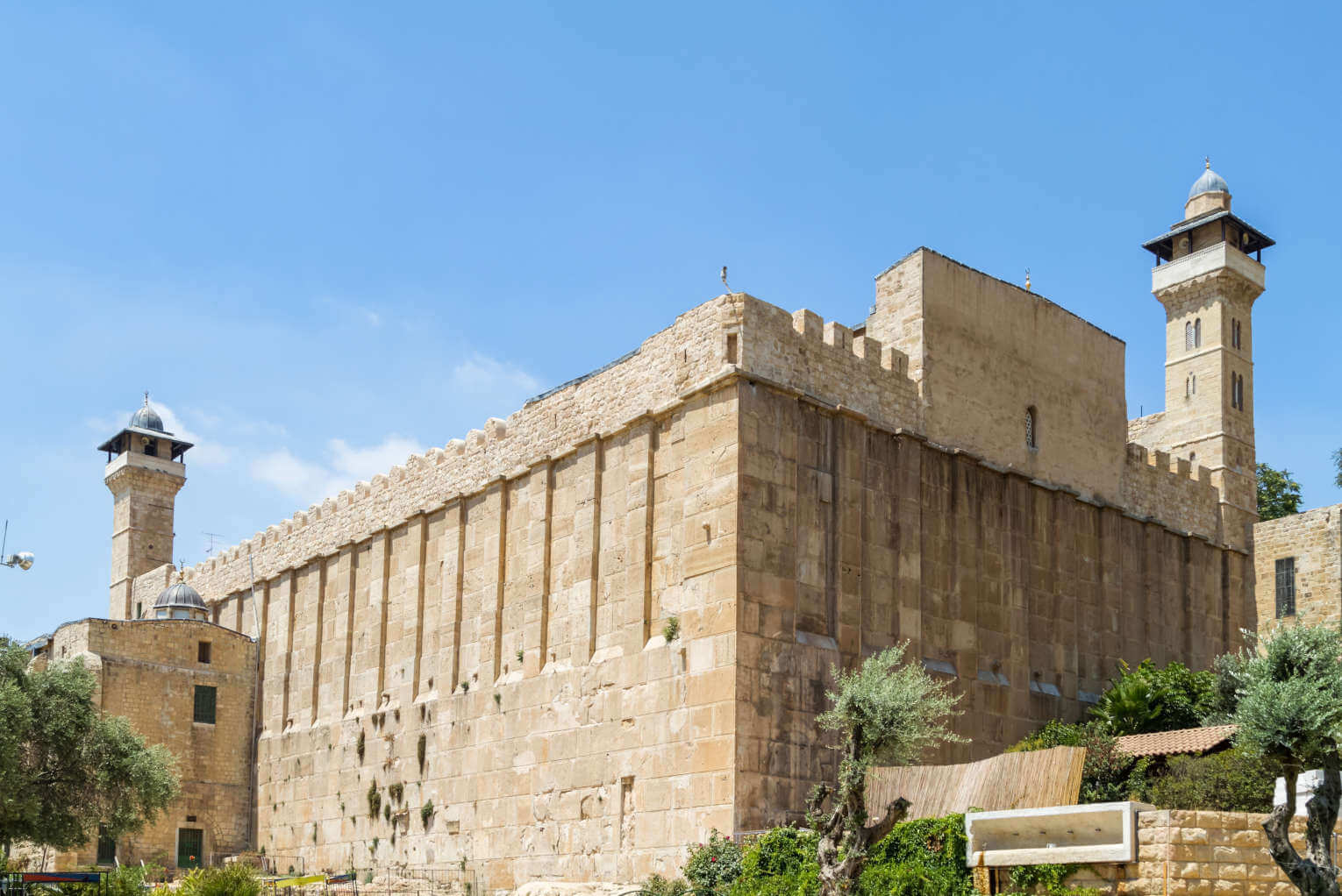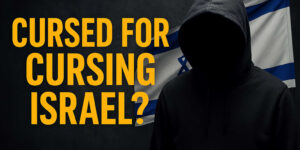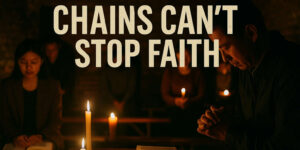Hebron: From King David’s First Capital to Hamas Stronghold
By: Tuvia Pollack/All Israel News
Hebron is one of the oldest cities in Israel and has been continually inhabited since before the time of Abraham. It’s located south of Jerusalem in the beautiful Judean mountain range, between the Dead Sea to the east, and the shores of Gaza to the west, about halfway between Jerusalem to the north and Beersheva to the south.
It’s easy to believe the name “Hebron” is connected to “Hebrew,” but it’s not. The name is “Chevron” in Hebrew and is derived from an ancient Semitic root indicating connection, alliance, or friendship, using the same root as the Hebrew word “chaver” – friend. In Arabic, the city has been called “al-Khalil” since the 13th century, but in older sources, the city is referred to as Habrun also in Arabic.
Hebron appears for the first time in Genesis 23, when Abraham approached the local Hittites to purchase a piece of land – a field with a cave – in which he could bury his wife Sara. This makes Hebron the earliest land to be legally owned by Abraham. His two sons, Isaac and Ishmael, are still fighting over who is the legal heir, which might be the longest ongoing inheritance conflict in history…
As we follow the continued story of Abraham, Isaac, and Jacob, we notice that whenever they or their spouses die, they are laid to rest in the same cave – the Cave of Machpelah in Hebron. The only exception is Rachel, who is buried in Bethlehem. Even Jacob – although he moves to Egypt with his sons – takes an oath from them that when he dies: They will bring his bones back, and bury him with his forefathers in the Machpelah Cave, which they do. The cave is, therefore, the burial place of Abraham, Isaac, Jacob, Sara, Rebecca and Leah.
After Joshua and his army conquered Canaan, Hebron became the capital of the tribe of Judah, but also a Levite city – and a city of refuge – where people who had accidentally killed someone could go to be safe from the blood avenger. A few centuries later, after King Saul is killed by the Philistines, David is elected king of the tribe of Judah only, and he naturally moves to Hebron, Judah’s capital, from which he rules.
Breaking News. Spirit-Filled Stories. Subscribe to Charisma on YouTube now!
Saul’s son, Ish-Bosheth, saw this as a rebellion, and the Bible describes seven years of civil war between them. There’s also a shameful event where David’s army general, Yoav, murders Avner within Hebron, to avenge his killed brother Asael – totally ignoring the city’s biblical status as a city of refuge.
Once Ish-Bosheth dies, and David becomes king of all Israel, he can no longer keep ruling from the Judean capital, Hebron. He needed a federal capital and thus chose Jerusalem. But Hebron continued to be an important city throughout his reign, and central to his home-tribe. This is why his son Absalom started his revolt against his father from Hebron.
After King Solomon’s death, the United Kingdom was divided between the northern Kingdom of Israel, and the southern Kingdom of Judah, and Hebron was, of course, in Judah, which was exiled in 586 B.C. to Babylon. This is where the Bible goes almost totally silent on Hebron, and we have to look at other sources.
Once the Jews were exiled, the Edomites moved into their land – including Hebron and the area surrounding it – and it was called Idumea by Persian, then Greek, and then Roman rulers. This doesn’t mean the Jews gave up on it. When the Jews returned from exile, Nehemiah once mentioned “Kiryat Arba,” which is an ancient alternative name for Hebron, and a few centuries later, Judah Maccabee fought the Edomites and plundered Hebron. Still, the city remained Idumean. Later, after the Jewish independence, Hasmonean King John Hyrcanus I occupied all of Idumean land and force-converted them all to Judaism.
Many years later, a man of Idumean descent rose to become Israel’s king – Herod the Great. Besides killing babies in Bethlehem and the restoration of the Temple in Jerusalem, he also built a wall around the Machpelah Cave in Hebron, which remains there today.
During the time of Jesus, Hebron was still an Idumean city, which meant it was technically Jewish, but probably under heavy Herodian and Roman influence. There is no mention of the city in the New Testament at all. During the Great Revolt, a Zealot leader captured and plundered the city, and then fell to the Roman army which burned down the town. In the Bar-Kochba rebellion, a generation later – the last Jewish attempt for independence – Jewish captives were sold at a slave market in Hebron in 135 A.D.
A few centuries later, the Roman Empire became Christian, and the Machpelah Cave became an important pilgrimage site as the burial place of Abraham. Similar to Jerusalem, Jews were not allowed in the city, and the Byzantine Romans built a church around the Machpelah Cave in the 6th century.
You might have heard that Jerusalem is the third holiest city in Islam, after Mecca and Medinah. Well, Hebron is definitely fourth, since it’s the burial place of Abraham. Justified or not, Muhammed saw the Arabs as descending from Ishmael, and thus Abraham – who worshipped the one true God – is the original founder of Islam from their perspective. Once the Muslims had conquered the city, the church was turned into a mosque, and Jews were allowed to live in Hebron and build synagogues.
In the Quran, Abraham gets the nickname “Khalil a-Rachman” or “the Friend of the Merciful,” i.e. friend of God. With time, Hebron, therefore, gets the name “al-Khalil” in Arabic. But since it literally means “friend,” it could be seen as a direct Arabic translation of the original name, Hebron.
The crusaders occupied Hebron in 1099 and renamed it “Castellion Saint Abraham.” They ruled it until Saladin came in 1187, and then Richard Lionheart, and then feudings between Templars and hospitalers… long story short, eventually all crusaders left, and the Muslim Mamluks ruled it from the 13th century.
When the Ottomans occupied the land in the 16th century, the Jewish community in Hebron was small, but had lived there continuously for a long time. After the expulsion from Spain in 1492, even more Jews had joined them. From the 16th century, there are four main centers for Jewish life in Palestine, and they’re all considered Jewish holy cities: Jerusalem, Hebron, Tiberias, and Safed. In the early 19th century, a group of European Ashkenazi Jews came to Hebron as well, building separate synagogues, and didn’t intermarry with the local Sephardi Jews who spoke Arabic and were more integrated with the local Muslims.
The British arrived in 1917, and 12 years later, the Arabs of Hebron instigated the 1929 Hebron massacre in which somewhere between 64 to 69 Jews were murdered and synagogues were destroyed. Some Jews ran to hide in their Arab neighbors’ homes. A few Jews moved back to Hebron two years later, but when the great Arab Revolt broke out in 1936, the British removed the Jews by force – only one Jew, Ya’akov ben Shalom Ezra, stayed. He was an 8th-generation Hebronite. But even he had to leave in 1947 after the UN partition vote, anticipating the War of Independence in 1948. Israel won the war, but Hebron was left behind the green line – in Jordanian hands, ending a continuous Jewish presence in the city since medieval times, at least.
The 1949 armistice included a clause allowing Jewish pilgrims to visit Jewish holy sites but, as with East Jerusalem, Jordan broke its promises, and banned all Jews – of all nationalities – entry to Hebron. During the 1950s, all signs that Jews had ever lived in Hebron were removed.
And then Jordan attacked Israel in 1967 and, as a result, lost its West Bank territory – biblical Judea and Samaria – to Israel. Initially, Israel didn’t want to allow settler activity at all, hoping to return the land in exchange for peace, but already by 1968, a group of Israeli Jews pretending to be tourists checked into a hotel in Hebron and refused to leave, eventually reaching a deal where they were allowed to set up a settlement nearby. They named it Kiryat Arba, after Hebron’s ancient alternative name.
The settlement enterprise had its ups and downs, and to this day there are Jewish settlers both within the city of Hebron itself and in settlements outside. Due to the significance of the city in Judaism – being Abraham’s burial place, – Hebron was never fully given over to the Palestinian Authority in the Oslo Accords like Ramallah or Jenin were.
When Benjamin Netanyahu became Prime Minister in 1996, the question of Hebron was still unsolved, and he reached an agreement with Palestinian Authority (PA) leader Yasser Arafat about dividing the city into two parts, H1 and H2, where H1, with 120,000 Palestinians, was to be under the PA rule, and H2, which included the older historic parts of Hebron and had 30,000 Palestinians and 700 Israeli settlers, was to be under Israeli military control.
Today, Hebron is in many ways a microcosm of the Israeli-Palestinian conflict.
There are many cities in Israel where Jews and Arabs live in proximity to one another, but Hebron is extreme, as both sides here often are radicalized. Extremist settlers and extremist Palestinians live extremely close to one another, often carrying out attacks against one another that radicalize the other side even further.
The unclear legal status of the area makes it a “wild west” of sorts, and internal Palestinian clan wars and corruption have undermined the PA’s ability to control the city. It’s the spot where the worst-ever terror attack by a Jew was carried out when, in 1994, Baruch Goldstein murdered 29 Palestinians in the Machpelah Cave mosque.
It is also a stronghold where many Palestinian terror attacks have taken place or originated, chiefly by members of the Qawasmeh Tribe, who dominate Hamas in Hebron. This included the suicide attacks in Beersheva in 2004, in which 16 Israelis were murdered; the kidnapping and murder of three yeshiva students in 2014, which triggered the (Tsuk Eitan Gaza War); and the 2003 terror attack in Haifa, which killed 17 people, including the 14-year-old Messianic Jewish girl Abigail Litle.
Despite all this, there are also glimmers of hope. In Hebron, all sides have access to the Machpelah Cave, which is no longer just a mosque, but half of it has been used as a synagogue since 1968. During Jewish and Muslim holidays, the religion celebrating a holiday will have full access to the entire complex, but most of the time, it is a shared shrine to Abraham. There have been controversies and fights about the Machpelah site, but due to IDF’s strict control, the status quo has been maintained, and no dangerous events leading to deaths have occurred since the 1994 shooting. If this status can be maintained, it is a nice reflection and perpetuation of the verse: “His sons Isaac and Ishmael buried him in the Cave of Machpelah near Mamre, in the field of Ephron son of Zohar the Hittite” (Genesis 25:9). Maybe one day this city could become a reflection of its name – a place of alliance.
This article originally appeared on ALL ISRAEL NEWS, and is reposted with permission.
Tuvia Pollack is a Jewish history nerd who lives in Jerusalem and believes in Jesus. He writes articles and stories about Jewish and Christian history. His website is www.tuviapollack.com.
Join Charisma Magazine Online to follow everything the Holy Spirit is doing around the world!






































